Text
So Venus is my favorite planet in the solar system - everything about it is just so weird.
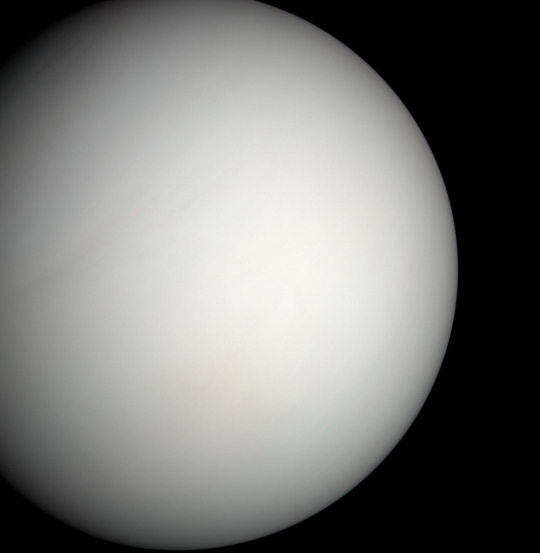
It has this extraordinarily dense atmosphere that by all accounts shouldn't exist - Venus is close enough to the sun (and therefore hot enough) that the atmosphere should have literally evaporated away, just like Mercury's. We think Earth manages to keep its atmosphere by virtue of our magnetic field, but Venus doesn't even have that going for it. While Venus is probably volcanically active, it definitely doesn't have an internal magnetic dynamo, so whatever form of volcanism it has going on is very different from ours. And, it spins backwards! For some reason!!
But, for as many mysteries as Venus has, the United States really hasn't spent much time investigating it. The Soviet Union, on the other hand, sent no less than 16 probes to Venus between 1961 and 1984 as part of the Venera program - most of them looked like this!

The Soviet Union had a very different approach to space than the United States. NASA missions are typically extremely risk averse, and the spacecraft we launch are generally very expensive one-offs that have only one chance to succeed or fail.
It's lead to some really amazing science, but to put it into perspective, the Mars Opportunity rover only had to survive on Mars for 90 days for the mission to be declared a complete success. That thing lasted 15 years. I love the Opportunity rover as much as any self-respecting NASA engineer, but how much extra time and money did we spend that we didn't technically "need" to for it to last 60x longer than required?
Anyway, all to say, the Soviet Union took a more incremental approach, where failures were far less devastating. The Venera 9 through 14 probes were designed to land on the surface of Venus, and survive long enough to take a picture with two cameras - not an easy task, but a fairly straightforward goal compared to NASA standards. They had…mixed results.
Venera 9 managed to take a picture with one camera, but the other one's lens cap didn't deploy.
Venera 10 also managed to take a picture with one camera, but again the other lens cap didn't deploy.
Venera 11 took no pictures - neither lens cap deployed this time.
Venera 12 also took no pictures - because again, neither lens cap deployed.
Lotta problems with lens caps.
For Venera 13 and 14, in addition to the cameras they sent a device to sample the Venusian "soil". Upon landing, the arm was supposed to swing down and analyze the surface it touched - it was a simple mechanism that couldn't be re-deployed or adjusted after the first go.
This time, both lens caps FINALLY ejected perfectly, and we were treated to these marvelous, eerie pictures of the Venus landscape:

However, when the Venera 14 soil sampler arm deployed, instead of sampling the Venus surface, it managed to swing down and land perfectly on….an ejected lens cap.
28K notes
·
View notes
Link
“A young scientist who worked in the jungles of Thailand has been awarded a national prize for his invention of a $2 paper microscope that can be taken on field expeditions.
If a scientist wants to study something at the microscopic level, they need a microscope, which if they are deep in the Amazon Rainforest presents a serious problem.
Stanford University bioengineer Manu Prakash saw in his team’s $50,000 microscope a serious contradiction. As well as being bulky and ridiculously challenging to transport to remote locations, it needed training from skilled technicians to know how to use it. It also had to stay well out of the weather and other environmental impacts.
So he invented a portable one. Costing $1.75, the Foldscope has a 140x zoom, which is a small enough field to see a malaria parasite inside a cell…
“I want to bring science into everyone’s hands, make it more personal,” Prakash told CNN. “We have decoupled everyday life from the process of science.”
The ultimate in schoolhouse science, Prakash’s invention has sold 1.6 million units, mostly to schools in America, but serious scientists are also using it—like Dr. Kirti Nitnaware in India who works on the isolation and characterization of bioactive metabolites in cyanobacteria.
She used the Foldscope last year to isolate a new species of cyanobacteria. For this and other reasons, Prakash received the 2022 Golden Goose Award from the American Association for the Advancement of Science (AAAS), parent company of the scientific journal, Science.
“The Golden Goose Award reminds us that potential discoveries could be hidden in every corner and illustrates the benefits of investing in basic research to propel innovation,” said Sudip S. Parikh, chief executive officer at AAAS.” -via Good News Network, 9/20/22
6K notes
·
View notes
Text
Want to get a slight edge during a coin toss? Check out which side is facing upwards before the coin is flipped –- then call that same side.
This tactic will win 50.8 percent of the time, according to researchers who conducted 350,757 coin flips.
For the preprint study, which was published on the arXiv database last week and has not yet been peer-reviewed, 48 people tossed coins of 46 different currencies.
They were told to flip the coins with their thumb and catch it in their hand—if the coins fell on a flat surface that could introduce other factors such as bouncing or spinning.
Frantisek Bartos, of the University of Amsterdam in the Netherlands, told AFP that the work was inspired by 2007 research led by Stanford University mathematician Persi Diaconis—who is also a former magician.
Diaconis' model proposed that there was a "wobble" and a slight off-axis tilt that occurs when humans flip coins with their thumb, Bartos said.
Because of this bias, they proposed it would land on the side facing upwards when it was flipped 51 percent of the time—almost exactly the same figure borne out by Bartos' research.
Continue Reading.
117 notes
·
View notes
Photo
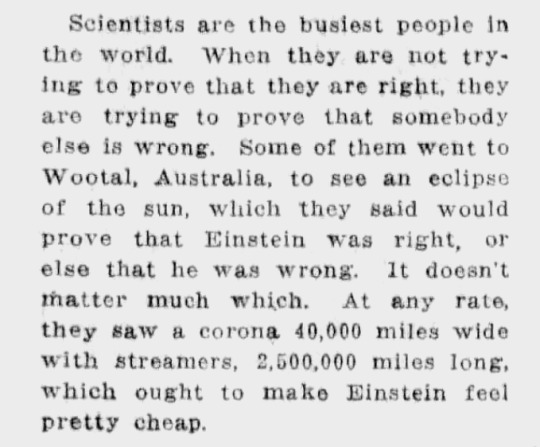
The Spokesman-Review, Spokane, Washington, September 27, 1922
2K notes
·
View notes
Text
When nature performs chemical reactions to create energy-rich compounds from simple molecules, it requires energy. So far, it has not been possible to use human-made electricity to drive these biochemical processes.
Researchers at the Max Planck Institute for Terrestrial Microbiology in Marburg have achieved a breakthrough, however: they developed an artificial metabolic pathway that uses electricity to produce ATP, a biochemical energy carrier which can then be used to form energy-rich chemical compounds like starch or protein. The metabolic pathway provides a complete novel approach towards a sustainable, climate-neutral bioeconomy.
Continue Reading.
557 notes
·
View notes
Note
I get that windmills are way overblown as a danger to birds, but I don't think I've heard your story about solar panels killing birds. How do they do that? Do the birds fly unto them like they do with windows? Is it a matter of habitat destruction?
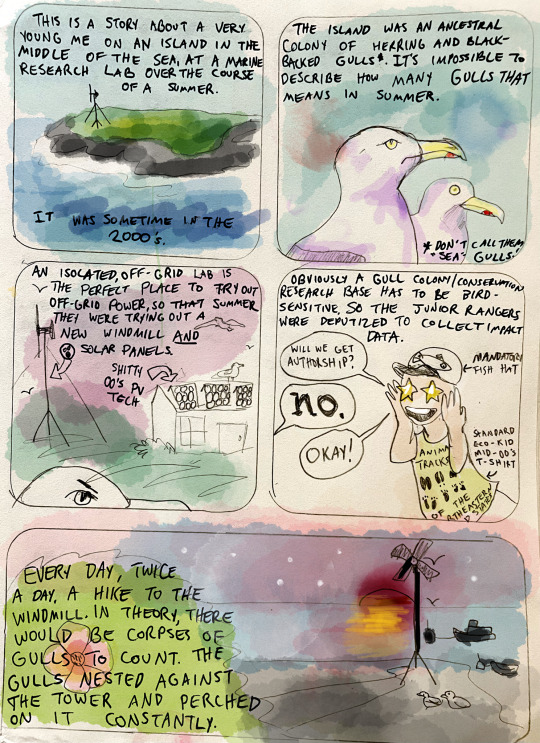


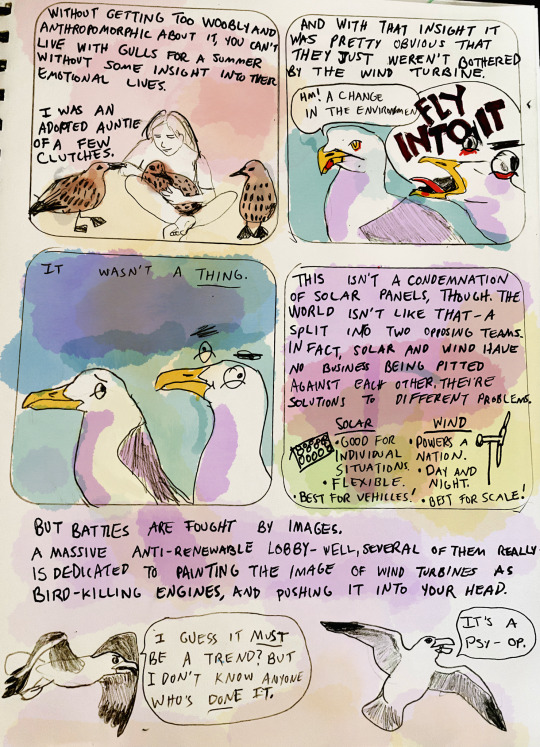
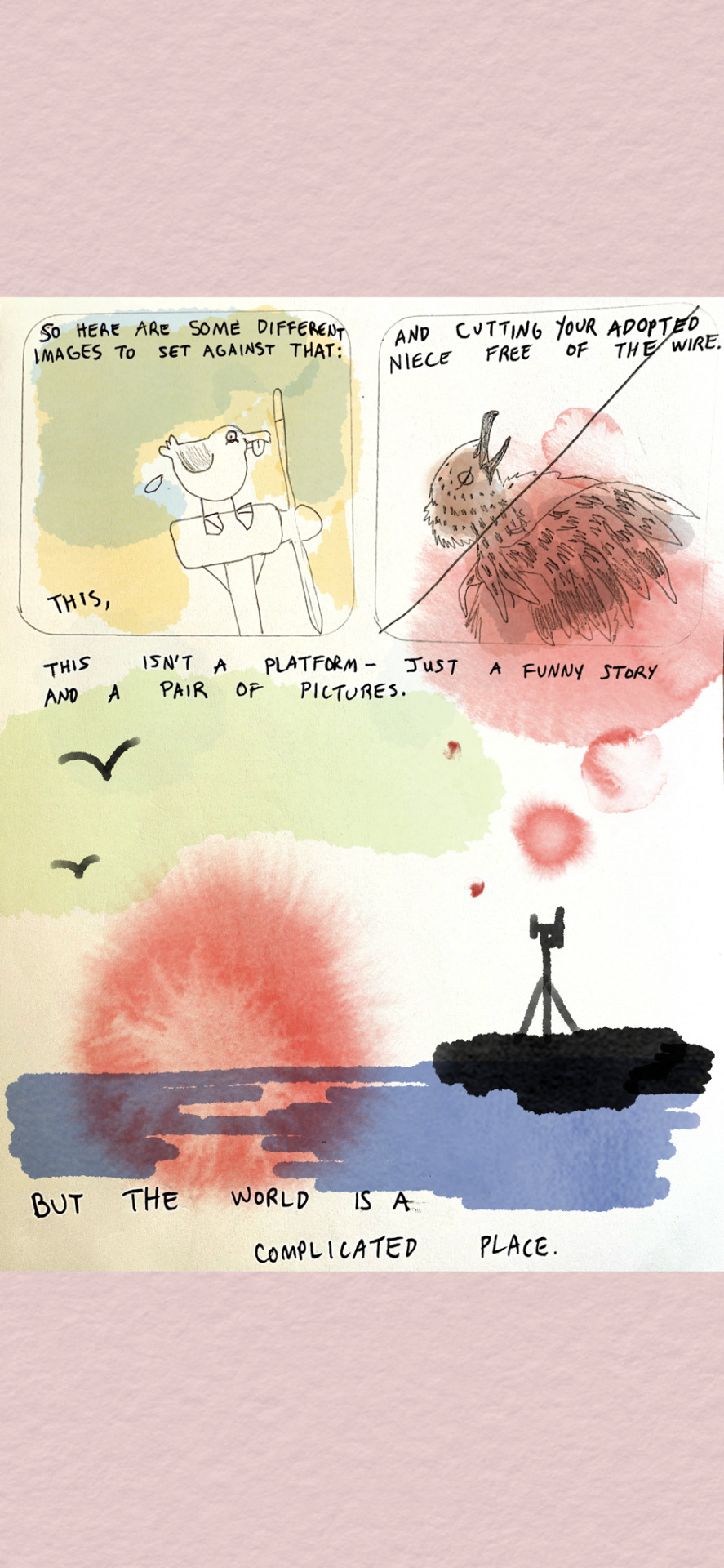
Death tolls that summer:
Wind turbine 0
Window glass 0
Rats 1
Gull fights/predation 3
Solar panels and various mitigations 5-7 (estimated)
5K notes
·
View notes
Video
tags per @elodieunderglass: #there is something undefinably but consistently wrong with everyone who goes into scicomm#and we say#GOOD FOR THEM
141K notes
·
View notes
Text
“The bank effect and the big boat blocking the Suez“
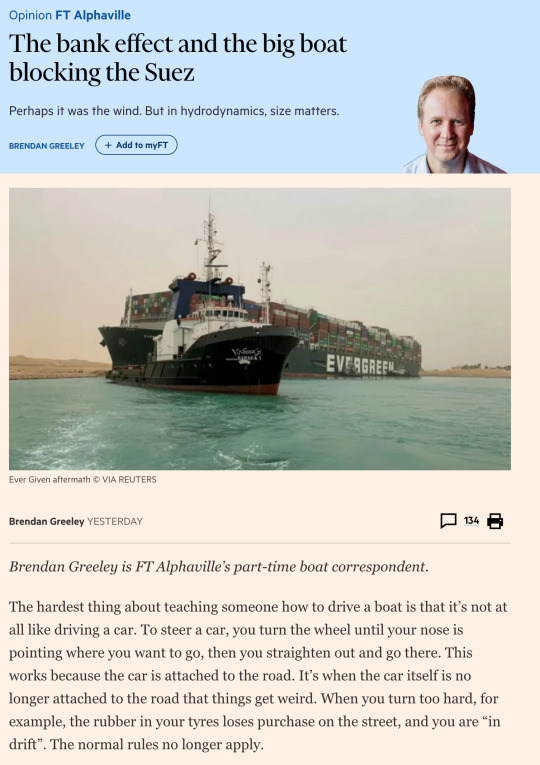
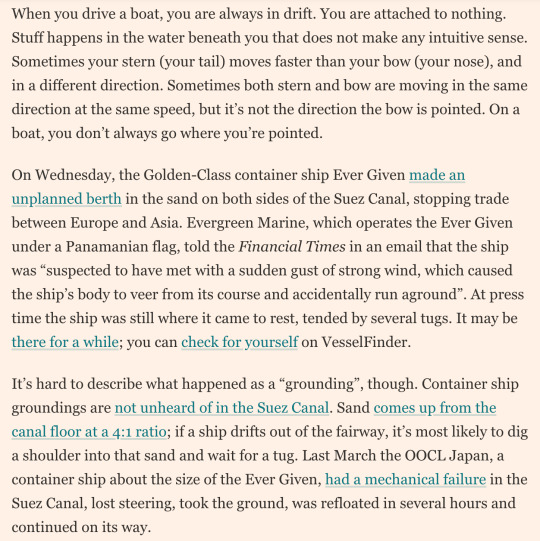

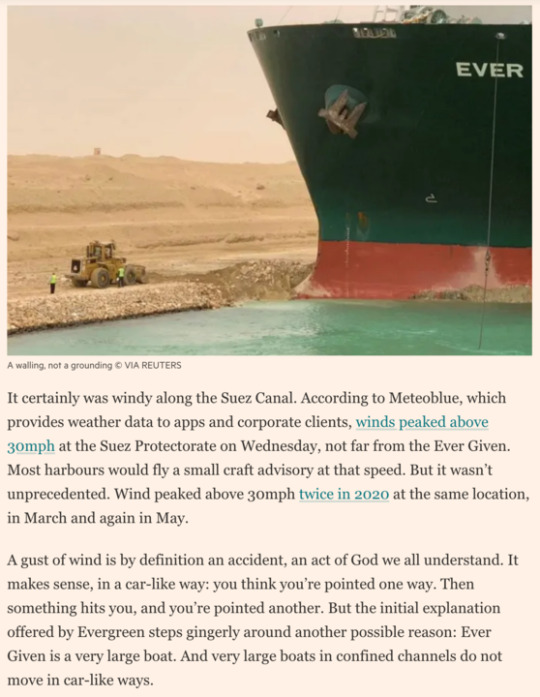





text version under the readmore
Keep reading
4K notes
·
View notes
Text
we do recommend not wearing your royal regalia in the lab if it interferes with your PPE


9 notes
·
View notes
Link
Covid-19 vaccines are starting to roll out in several countries, a momentous breakthrough that hopefully signals a light at the end of this dark pandemic. For Katalin Karikó, the moment is particularly special.
Karikó has spent decades of her career researching the therapeutic possibilities of mRNA, a component of DNA that is considered to be one of the main building blocks of life. Through multiple setbacks, job losses, doubt and a transatlantic move, Karikó stood by her conviction: That mRNA could be used for something truly groundbreaking. Now, that work is the basis of the Covid-19 vaccine.
Karikó, 65, began her career in her native Hungary in the 1970s, when mRNA research was new and the possibilities seemed endless. But the call of the American dream (and more researching and funding opportunities) took root.
In 1985, she and her husband and young daughter left Hungary for the US after she got an invitation from Temple University in Philadelphia. They sold their car, Karikó told The Guardian, and stuffed the money – an equivalent of about $1,200 – in their daughter’s teddy bear for safekeeping…
She continued her research at Temple, and then at the University of Pennsylvania’s School of Medicine. But by then, the bloom was off the rose of mRNA research, and Karikó’s idea that it could be used to fight disease was deemed too radical, too financially risky to fund. She applied for grant after grant, but kept getting rejections, and in 1995, she was demoted from her position at UPenn. She also was diagnosed with cancer around the same time.
“Usually, at that point, people just say goodbye and leave because it’s so horrible,” she told Stat, a health news site, in November. “I thought of going somewhere else, or doing something else. I also thought maybe I’m not good enough, not smart enough.”
But she stuck with it.
Eventually, Karikó and her former colleague at the University of Pennsylvania, Drew Weissman, developed a method of utilizing synthetic mRNA to fight disease that involves changing the way the body produces virus-fighting material, she explained on CNN’s “Cuomo Prime Time.”
That discovery is now the basis of the Covid-19 vaccine, and some have said both Weissman and Karikó, now a senior vice president of the Germany-based BioNTech, deserve a Nobel Prize.
174 notes
·
View notes
Text
Episode 74: Environmentalism ft For What It’s Earth
Emma from For What It's Earth joins in for a chat about the state of protected species, using super powers for good, and what's up with fences? Find more from FWIE, and all our other Stimulus Network shows, at http://stimulus.network Listen to For What It's Earth, Small Screen Science, and all the other Stimulus Network shows here
Apple Podcasts // Spotify // Stitcher // Google Podcasts // More apps
Support us on Patreon
1 note
·
View note
Text
Episode 73: The Ig Nobel Prizes
The Ig Nobel Prizes return! This years celebration of radical research includes an alligator on helium, the sceince of sounds driving you wild, and what not to do with frozen poo. All in a days work for Improbable Research. Donate to the Ig Nobel Prizes here
Apple Podcasts // Spotify // Stitcher // Google Podcasts // More apps
More science shows are live now on The Stimulus Network
Support us on Patreon
2 notes
·
View notes
Text
Thank you for the review Elodie!
We highly recommend everyone listens to the following episode too, where we speak to to Dr Lambourne (It’s a pen name, he promises he has actual qualifications) and discuss some of our criticisms.
Episode 71: Fertility crisis and the mystery of Dr Lambourne
Who is Dr AC Lambourne? Is the fertility crisis in The Lancet real? Is porn and pet ownership really to blame for population collapse? Some strange science news in this episode, including discussion of how to avoid being lied to with science.
If you have any information about Dr Lambourne or Broad Horizons publishing, or were approached like we were, please contact us via email or Twitter
Read the article in The Lancet here, or the coverage on the BBC.
Apple Podcasts // Spotify // Stitcher // Google Podcasts // More apps
More science shows are live now on The Stimulus Network
Support us on Patreon
127 notes
·
View notes
Photo
some people: scientists are perfectly logical and do not hold with foolish superstition.
actual scientists: you FOOL, give the apparatus back its guardian cuddly toy!
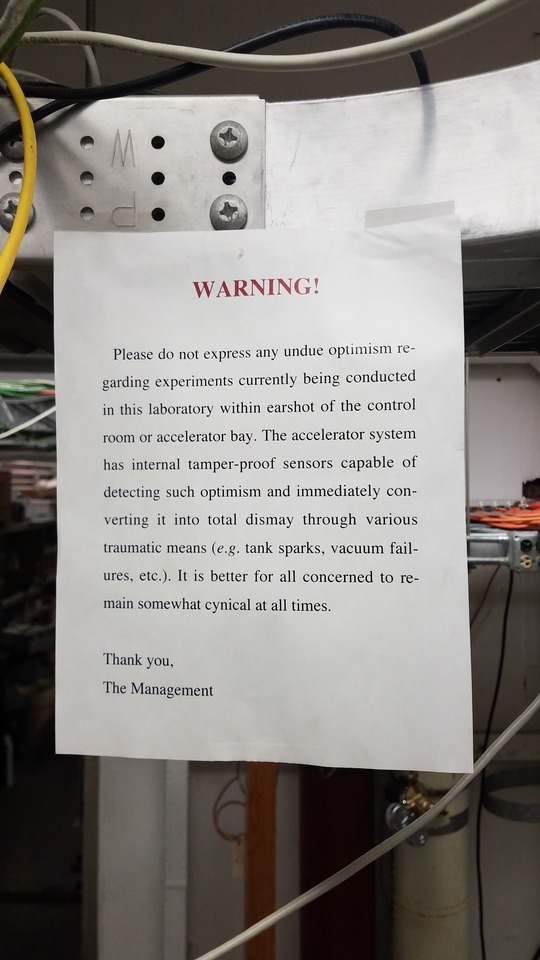
I love my job ⚛❤
27K notes
·
View notes
Text
Episode 72: Interview with Dr Lambourne
Following our previous episode, Dr Lambourne agreed to speak with us and discuss the fertility crisis, migration, and our thoughts on his book.
Honestly, this went much more civilly than I think either of us expected.
Make sure you listen to the previous episode to understand why we're talking about porn, population health and how stimulating Henry Cavill is.
Apple Podcasts // Spotify // Stitcher // Google Podcasts // More apps
More science shows are live now on The Stimulus Network
Support us on Patreon
#fertility#children#pornography#psychology#sociology#society#environment#parenting#extinction#our episodes#STEM#research#interview#podcast
20 notes
·
View notes
